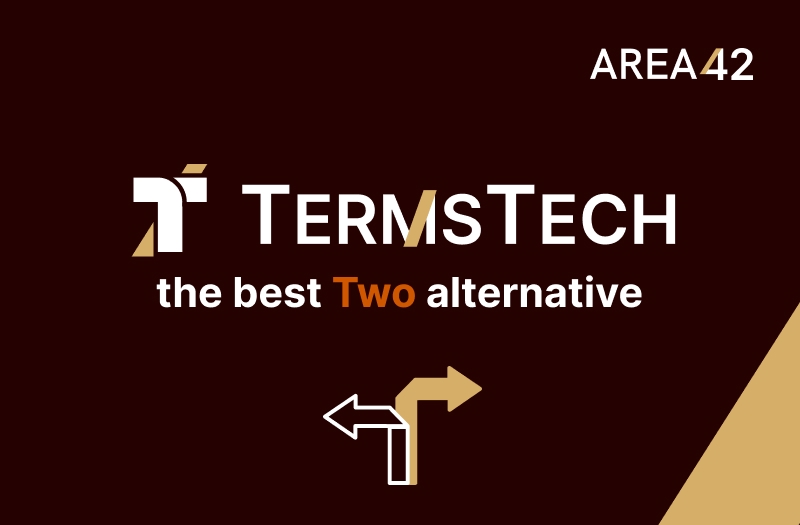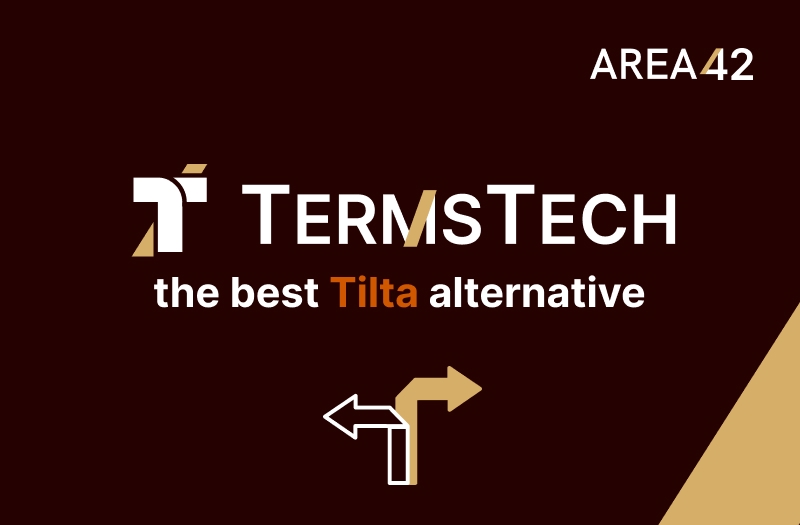‘The faster and more efficient trade becomes, the less expensive and more equitable it is for us all,’ according to Lode Vermeersch, TradeTech industry leader and Head of AREA42.
What is TradeTech?
The term TradeTech was coined by AREA42 to describe innovations in digital technology that respond to trade problems and challenges. TradeTech sets out to create the conditions and tools for smoother and more effective global trade. TradeTech is a natural evolution – and disruption! – of the trade world.
Wheels, ships, containers, and trains, standardized currencies, credit, and the easing of customs controls. These have all smoothed trade in the past. We now have AI, robotic process automation (RPA), blockchain/digital ledger technology (DLT), the Internet of Things (IoT), and more!
What is the difference between TradeTech and FinTech?
FinTech is short for Financial Technology. TradeTech is short for Trade Technology. FinTech is fairly broad, covering any new digital technology that helps businesses or consumers have more efficient financial operations. TradeTech is similar, and can be considered a niche of FinTech. The differentiator is that TradeTech is specifically focused on global trade.
Just to touch the surface of Fintech, think about your internet banking, e-wallets, sending a friend money from your phone, buying crypto or stock shares with the push of a button, increasing efficiency in traditional banking, etc. Countless startups and large established finance institutions have been driving these changes. And, most of us take them for granted already.
TradeTech, as defined by the World Economic Forum (WEF), is ‘the set of technologies that enhance the efficiency, inclusivity and sustainability of global trade.’ So, in our current era, the Fourth Industrial Revolution (4IR), TradeTech aims to do for global trade what FinTech has done for personal and institutional finance. There are many fascinating examples. Some TradeTech services include buy now pay later for B2B or drones to support end-to-end logistics. There are also developments in B2B marketplace transition and automation.
What are the objectives of TradeTech?
TradeTech has two main objectives. The first is to transition or transform trade data processes from analogue to digital. The second is to synchronize and optimize international trade driven by tech innovations, i.e. to create frictionless trade processes. But, what does ‘frictionless’ trade really mean?
Smoothing out the way trade is done includes increasing the efficiency, speed, value, and benefits of trade by combining the more specific TradeTech objectives listed here:
- To create paperless and visible end-to-end supply chains that connect all of the relevant stakeholders.
- To increase reliability and trust between stakeholders.
- To reduce costs by increasing automation of repetitive processes.
- To innovate more efficient business models.
- To increase sustainability through transparency about environmental and labour practices throughout the supply chain.
- To reduce the risks and possibilities of supply chain disruptions. (e.g. we’ve learnt the hard way recently with the Covid-19 pandemic – so what have we learnt and how can tech help supply chains in similar situations?)
- To give businesses better risk management and response tools.
- To reduce financial crime through increased transparency of all steps of trade processes.
- To increase inclusiveness in trade via, e.g., increasing opportunities for small and medium-sized businesses.
- To increase supply chain security.
Is there optimism for TradeTech solutions?
Yes! There is a high level of optimism for TradeTech’s transformative potential. WEF’s 2022 global survey on trade tech shows businesses’ perceptions of how TradeTech will disrupt global trade. Innovations leading to lower trade costs and higher speeds of transactions and payments is the most optimistic topic.
The top expectations according to the WEF survey are:
- Lower trade costs and higher speeds – 63%
- Trade in new products or services – 55% (SMEs – maybe you will innovate these!)
- Positive environmental outcomes – 49%
- Inclusion of smaller players in trade – 44% (SMEs – take note of this and get involved!)
- Increase volume of trade in physical goods due to reduction in transactional costs – 44%
- Employment effects – 44%
What are the 5Gs of TradeTech?
Although there is optimism about the potential of TradeTech, there are real international legal and policy issues that need to be resolved. The 5Gs are where new digital tech used for facilitating global trade hits the speed bumps of global policy, legislation, and possible lack of coordination.
The 5Gs of TradeTech are:
- Global data transmission and liability frameworks
- Global legal recognition of electronic transactions and documents
- Global digital identity of persons and objects
- Global interoperability of data models for trade documents and platforms
- Global trade rules access and computational law
The 5Gs don’t necessarily need to be viewed as blockers, although they do present challenges. Instead they can be opportunities for harmonising global trade. They provide chances for businesses and governments to innovate and deploy the right tools for end-to-end trade digitalization. Read more on the 5Gs here.
How can TradeTech help your business?
TradeTech can help your small or medium-sized business from being left out. TradeTech drivers like AREA42 through innovation, strive to provide solutions that are not limited to large corporations, but can also be adopted by SMEs. Leveling the playing field is one of the big benefits of successful TradeTech impact.
Your business may see multiple threats and risks, to name a few:
- complicated purchasing processes
- stressed cash flow
- conducting business in a challenging credit environment
- lack of skills or capacity.
AREA42 is working hard to make trade future-proof. By exploring new and alternative ways to create business opportunities, AREA42 is driving forward sustainable solutions with real impact.
For example, TermsTech is our white label payments terms solution for B2B marketplaces and merchants. This businesses can put into place customisable deferred payments solution with a true Buy Now, Pay Later model. And, their customers receive clear and appropriate payment terms enabling both sides of the transaction to maximise their cash flow and growth.
Meanwhile, GrowKap is our purchase order financing solution enabling growing SMEs to get the goods they need to deliver on big orders – and continue their growth. GrowKap does not use factoring, which is a typical financing tool. Instead of buying outstanding invoices at a discount, GrowKap is forward looking and pays the supplier directly. This creates better supplier-purchaser relationships, and allows GrowKap’s customer to fulfil large orders without putting strain on their cash flow.
How can I learn more about TradeTech?
TradeTech is evolving everyday and provides ample learning opportunities. For a deeper dive into TradeTech, we highly recommend these reports and white papers. AREA42, the World Economic Forum, and the World Trade Organization have expertly crafted these publications to help you understand TradeTech and its business benefits.
- The Promise of TradeTech Policy Approaches to Harness Trade Digitization (WEF, April 2022)
- Cyber-Physical Systems x Blockchain for Trade (AREA42, March 2022)
- Accelerating Trade Digitization to Support MSME Financing (WTO, March 2021)
- Mapping TradeTech in the Fourth Industrial Revolution (WEF, Dec 2020)
Contact us

Hi, I’m Wouter!
I’d love to discuss how we can help your operation with our working capital solutions. I’m looking forward to meeting you and answering all of your questions about AREA42.




